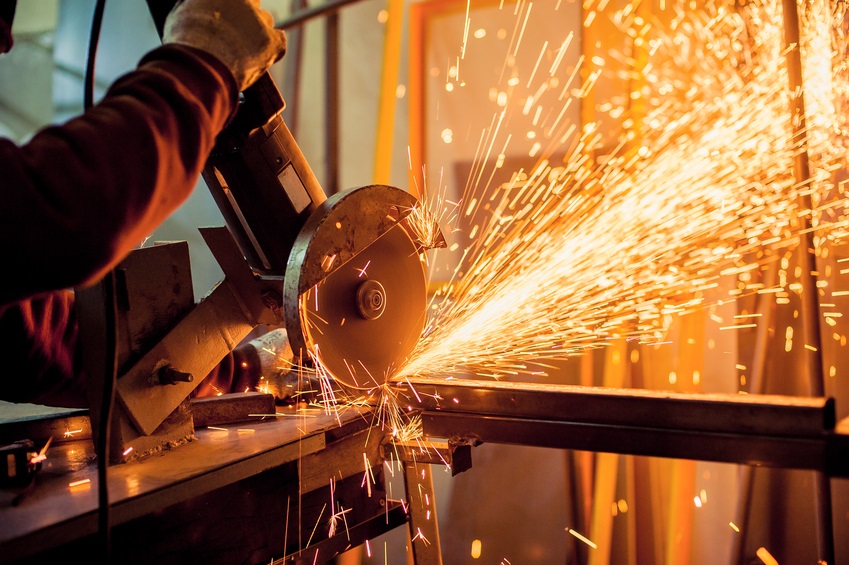 Regardless of the product they are creating, all manufacturers face the dilemma of how to control costs while maintaining high quality standards. From the costs of labor and raw materials to those associated with keeping machinery in prime condition and operating the typically large buildings in which manufacturing facilities are housed, businesses in the manufacturing industry contend with numerous expenses that compromise their profitability.
Regardless of the product they are creating, all manufacturers face the dilemma of how to control costs while maintaining high quality standards. From the costs of labor and raw materials to those associated with keeping machinery in prime condition and operating the typically large buildings in which manufacturing facilities are housed, businesses in the manufacturing industry contend with numerous expenses that compromise their profitability.
Fortunately, there are several strategies available for manufacturers to reduce expenses and improve their bottom lines. Some of these strategies are found in the federal tax code and are often overlooked by manufacturing businesses.
As a manufacturer, have you considered these five methods for saving money?
1. Optimize the manufacturing process. Developing more efficient manufacturing processes is the key to striking an ideal balance between high quality and low costs. Techniques for streamlining processes include ensuring that the engineering, production, and sales teams are communicating with each other, and carefully monitoring the amount of material that is wasted during production in order to identify opportunities for saving resources.
2. Claim the Research and Development (R&D) Tax Credit. Contrary to a common misconception among many businesses, the R&D Credit does not reward only high-tech innovation and scientific pursuits. Each year, this underutilized incentive saves billions of dollars for businesses of all sizes across a wide variety of industries. If a manufacturing company succeeds in developing a more efficient process, it may constitute a qualifying activity for the R&D Credit. Other examples of qualifying R&D activities include improving equipment or creating a more environmentally friendly product or process.
3. Incorporate sustainable design into manufacturing facilities. The industrial sector consumes an estimated 30 percent of all energy used in the US, with manufacturing industries accounting for most of this amount. Manufacturing operations typically require sprawling buildings and equipment that guzzle resources. Therefore, sustainable design offers an excellent opportunity for manufacturers to cut costs. By implementing systems and fixtures that conserve energy and other resources, the owners of manufacturing facilities can significantly reduce utility expenses. Due to the vast savings that decreasing consumption yields, sustainable design is growing in popularity among manufacturers, and many are pursuing LEED certification for green building. This highly respected designation carries the added bonus of attracting the attention of an increasingly eco-conscious pool of consumers.
4. Seize the §179D deduction. In addition to the savings on utility costs that stem from adopting sustainability, the tax code offers commercial building owners a generous opportunity for tax savings. Section 179D provides a deduction of up to $1.80 per square foot for energy-efficient upgrades to new or existing buildings. Taxpayers may claim a maximum deduction of $.60 per square foot for lighting, $.60 per square foot for HVAC, and $.60 per square foot for the building envelope. For owners of large manufacturing facilities, these savings can quickly amount to a substantially reduced tax burden. Using §179D, Capital Review Group helped one client, a steel manufacturer with an 88,000 square foot warehouse, harness $53,000 in tax savings by replacing outdated 400-watt lightbulbs with an energy-efficient alternative. Although there is a strong chance that this lucrative incentive will be renewed, it is currently due to expire at the end of 2016, so now is the time for commercial building owners to seek sustainable upgrades.
5. Consider other strategies for tax savings. The tax code contains numerous strategies that commercial building owners can use to reduce their expenses. For example, cost segregation allows the taxpayer to claim accelerated depreciation deductions by simply reclassifying certain real property assets as tangible personal property. In addition, the tangible property regulations allow all taxpayers who have acquired, produced, or improved tangible property to seize additional deductions and losses for assets that were capitalized as improvements in previous years.
These methods are just a few examples of ways that manufacturing businesses can reduce operating expenses and boost their net profits. To learn more, contact CRG to schedule a pro bono analysis!
(Sources: http://www.manufacturing.net/article/2013/09/six-steps-streamlining-manufacturing-processes, http://www.eia.gov/todayinenergy/detail.cfm?id=8110, http://www.environmentalleader.com/2016/07/25/why-sustainable-manufacturing-facilities-are-green-buildings-next-big-thing/).